Yolanda Ridge's Blog
May 7, 2025
Canadian Children’s Book Week
What an amazing experience!
As part of the 2025 tour, the Canadian Children’s Book Centre sent me to the west coast. I’m super grateful to all the Vancouver and North Vancouver teacher-librarians who invited me to speak to their students. Everyone was super welcoming! And I really appreciated all the teachers who kept my large audiences attentive and enthusiastic. It was a tiring week but I’m come back with a renewed passion for writing and children’s literature!






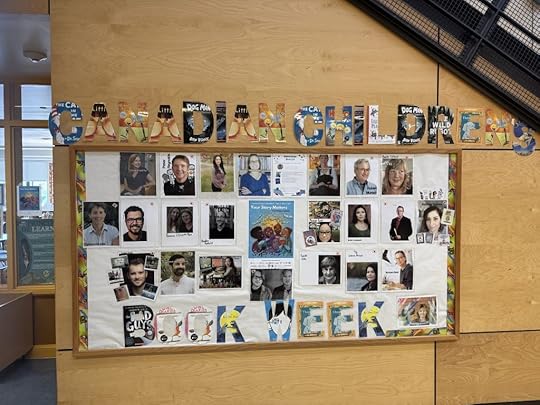
Many thanks to the Canadian Children’s Book Centre for organizing and hosting the event. A huge shout out to the donors, as well. It wouldn’t be possible without you! Thank you for supporting youth literacy and Canadian creators.
More information about this annual event is available on the Book Week website.
The post Canadian Children’s Book Week appeared first on Yolanda Ridge.
March 12, 2025
Green Earth Book Award
What Poo Can Do: How Animals Are Fighting the Climate Crisis is on the long list for the 2025 Green Earth Book Award! The Nature Generation‘s panel of judges are reviewing over 100 books on the long list. Awards are given out in six categories, including Children’s Non-Fiction.
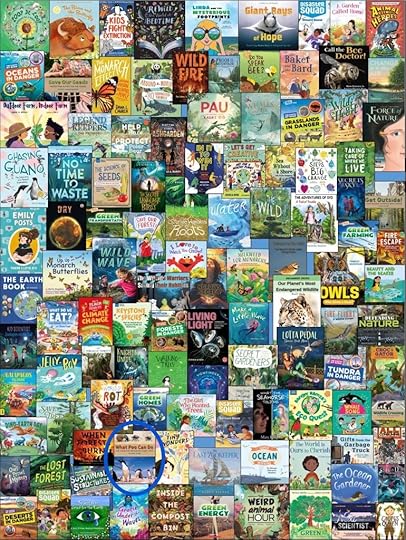
It’s wonderful to see What Poo Can Do—along with other great titles from Orca Book Publishers—on the same list as so many environmental-themed books. Thank you to the entire team and good luck to the judges!
The post Green Earth Book Award appeared first on Yolanda Ridge.
February 11, 2025
Obaasan’s Boots
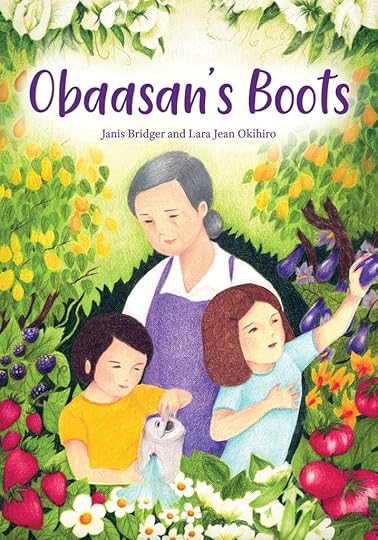
“They had everything taken from them because they were Japanese.”
Cousins Lou and Charlotte don’t know a lot about their grandmother’s life. When their Obaasan invites them to spend the day in her garden, she also invites them into their family’s secrets. Grandma shares her experience as a Japanese Canadian during WWII, revealing the painful story of Japanese internment. Her family was forced apart. Whole communities were uprooted, moved into camps, their belongings stolen. Lou and Charlotte struggle with the injustice, even as they marvel at their grandmother’s strength. They begin to understand how their identities have been shaped by racism, and that history is not only about the past.
This is a beautiful, intergenerational story complimented by line drawings. It is told in alternating timelines. In the contemporary timeline, two cousins spend the day in the garden with their grandmother. The point of view alternates during this timeline. Twelve-year-old Charlotte from Vancouver and ten-year-old Lou from Toronto take turns narrating chapters in first person. The other timeline is introduced in the middle of chapter three when Obaasan begins sharing memories from her childhood and beyond. These sections are marked by time stamps, spanning from spring 1928 to March 1966. Obaasan also uses first person, which can be a bit confusing, especially since most chapters go back and forth from contemporary to historical several times. Her description of growing up as a Japanese Canadian is powerful, though, as is Charlotte and Lou’s reaction to it.
The title is symbolic of the cousins’ new appreciation for their history and heritage. They understand what it was like to walk in their grandmother’s shoes and how their family is still influenced by the past. The end includes an author’s note where the cousins and co-writers describe their personal connection to the story. There is also a timeline of Japanese immigration, internment and the War Measures Act. The glossary helps ground readers in Japanese culture, expressions and my favorite: food! Highly recommended for classrooms.
The post Obaasan’s Boots appeared first on Yolanda Ridge.
February 5, 2025
Book Week Update
Due to circumstances beyond our control, The Canadian Children’s Book Centre has moved my book tour from Edmonton to Vancouver. I’m disappointed I won’t be doing author visits in Edmonton but excited to return to another of my former hometowns!
More information is available on the Book Week website. The new deadline to apply is February 9th but it sounds like spots are filling up fast. Please reach out to me or the book week coordinator if you have any questions. Thanks!

The post Book Week Update appeared first on Yolanda Ridge.
January 21, 2025
Edmonton Here I Come!
Edmonton area teachers, librarians educators! Please consider hosting me for an author visit during Book Week!
More information on the Book Week website. I appreciate people sharing with anyone who might be interested. The deadline to apply is January 31st.

I have applied to tour with The Canadian Children’s Book Centre for years and I’m finally getting the opportunity. The excitement is real! Thank you so much for your support.
The post Edmonton Here I Come! appeared first on Yolanda Ridge.
December 9, 2024
Bigfoot Crossing

If Bigfoot is a myth, then who kidnapped Jay’s Dad?
Jay’s dad loves hunting for Bigfoot, but searching for a mythical creature in the dark isn’t Jay’s idea of fun. Especially since Bigfoot isn’t real. Plus, Jay always gets stuck looking out for his little sister. But on one of these trips in the bush, something starts hunting the three of them. Then Jay’s father goes missing, and it’s not long before he learns that mythical creatures are not the only threat in the woods.
Wow – what a great, fast-paced book full of twist and turns! I haven’t read many titles in the Orca Current series of high-interest, low-reading level books. After Bigfoot Crossing, I’m definitely going to read more, though, and maybe try writing one of my own! I can’t say too much about Bigfoot Crossing without giving away the plot. There’s never a dull moment. Yet even with all the action, Gail Anderson-Dargatz manages to develop Jay’s character and add a subplot about his mom. I love the author’s note at the end. Anderson-Dargatz shares her inspiration and research into Bigfoot’s possible existence, potentinal behaviors and more. I’m not sure whether I believe in Bigfoot or not. But I do believe that young people will love this book, which asks as many questions as it answers through Jay’s short, thrilling adventure.
The post Bigfoot Crossing appeared first on Yolanda Ridge.
November 18, 2024
Game Face

Thirteen-year-old Jonah is determined to prove that anxiety won’t stop him from succeeding as his hockey team’s goalie in this dynamic novel in verse.
What-ifs rattle around his brain at the worst times, like when he’s in the middle of a playoff game. What if he lets his teammates down? What if he can’t make it pro? And the biggest what-if of all, the one he keeps to himself — what if he’s like his dad, whose life is controlled by anxiety that has only gotten worse since Jonah’s mom died in a car crash?
To prove that he’s not like that, Jonah is determined to succeed in the high-stress role of goalie. He and his best friend Ty have big plans for their hockey futures. But when Ty suffers a medical crisis during a pivotal game, Jonah’s anxiety ramps up to new levels
It takes courage to ask for help, but Jonah starts to realize that his team goes beyond the people who lace up their skates with him every week, and maybe it’s okay to look for support on and off the ice.
From the adrenaline rush of sudden-death overtime to the weight of worrying about letting your teammates — and yourself — down, this novel in verse will hook readers from the first line.
There are many similarities between Game Face and Elliot Jelly-Legs and the Bobblehead Miracle. Both main characters are middle grade boys who have a love-hate relationship with hockey. Both have a complex relationship with their dad and struggle with anxiety. Shari Green even uses a line similar to one I used in Elliot’s story: “…travelled faster than Connor McDavid on a breakaway.” I guess it’s an obvious simile for a hockey book but still, what are the odds that two BC authors would tackle such a similar story in two completely different ways?
Because there are lots of differences. I think readers who like one will like the other–especially if they’re into hockey–but both books are about so much more than what happens on the ice. Anxiety is front and center in Game Face. Jonah really lets the reader get to know Al, the alien inside his head, as he learns how to deal with his anxiety. I like the pause button tool provided by his school counsellor. And I adored Oma and Rose for giving Jonah with a soft place to land. Without giving anything away, I cried on page 349 and was deeply touched by this passage:
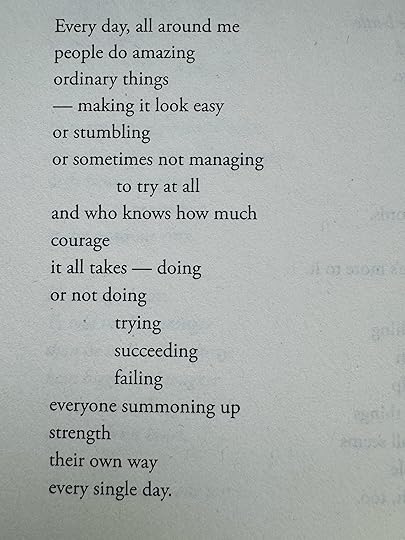
There’s so much to love about Game Face. Above all, Green‘s use of prose to describe a sport like hockey is masterful.
The post Game Face appeared first on Yolanda Ridge.
July 8, 2024
Chocolate Lily Award Shortlist 2025

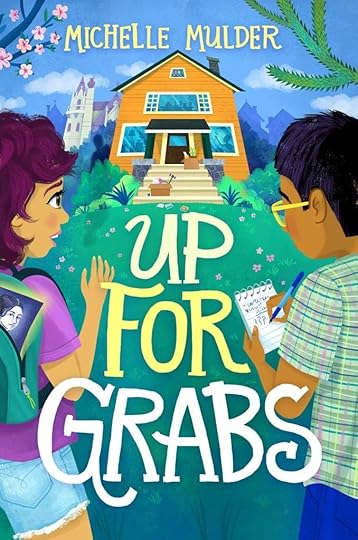


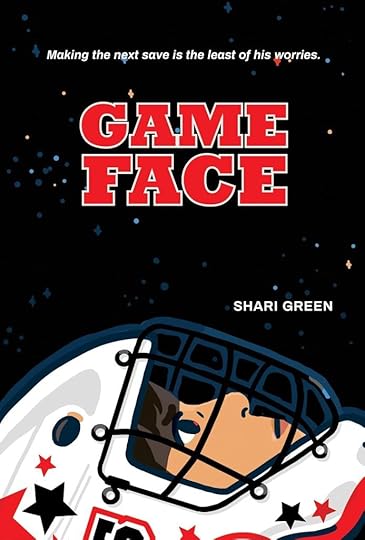

I am thrilled that Elliot Jelly-Legs and the Bobblehead Miracle is on the 2024/25 Chocolate Lily Award Shortlist! Here are the other nominees in the novel category:
Bigfoot Crossing by Gail Anderson-Dargatz (Orca Book Publishers)
Elliot Jelly-Legs and the Bobblehead Miracle by Yolanda Ridge, illustrated by Sydney Barnes (Orca Book Publishers)
Game Face by Shari Green (Groundwood Books)
Obaasan’s Boots by Janis Bridger and Lara Jean Okihiro (Second Story Press)
Shamus The Urban Rez Dog, P.I. by Leslie Gentile (DCB Young Readers)
Up For Grabs by Michelle Mulder (DCB Young Readers)
I haven’t done reviews in a while but I’m hoping to dig into all these titles and will try to post soon. Congratulations to all the authors and illustrators. And a huge thank you to the coordinators of this great book program for kids!
The post Chocolate Lily Award Shortlist 2025 appeared first on Yolanda Ridge.
November 9, 2023
Weird Rules to Follow

This award-winning book is a series of vignettes from the first person narrator, Amelia Douglas (Mia), during elementary school in the 1980s. Each short chapter gives readers an intimate insight into what it was like to belong to the Indigenous community of Tsimshian while growing up in the small coastal town of Prince Rupert, British Columbia.
There’s so much to love about Weird Rules to Follow but I’m going to start with the cover. It beautifully demonstrates both the beauty and bleaknesses of Prince Rupert while showing the bond between Mia and her best friend, Lara. Bikes also play a recurring role in the story and my heart ached for Mia when her brand new bike–that she chose over braces–was stolen.
The title perfectly captures the differences between Mia and Lara, who lives in a big house that’s different in every way to Mia’s other than location. For Mia, a weird rule to follow is not bringing bologna sandwiches to school because according to her mom, “only Indians and poor people eat them”. Lara, on the other hand, has a lot of rules that Mia can’t relate to such as not playing outside until she’s done her homework or practiced her lessons or finished her chores. Mia has no such restrictions and almost fails sixth grade as a result.
In the last few chapters of Weird Rules to Follow, Mia enters Junior High and finds herself wanting more rules to help navigate changing social dynamics and the drifting apart of her and Lara. She wonders how her mom managed to be the first in her family to graduate high school while adjusting to life off the reserve of Kitkatla where she grew up.
The narrative shifts between past and present just as Mia’s life shifts between moments of joy and profound discrimination. Tough topics like poverty and alcoholism are softened by details like “I can easily tell the difference between a Bob Seger and a BIly Joel crowd” (although I wonder if they appeal more to me as someone who grew up in the 80s than a middle grader reading the book today).
Residential schools are referred to as “those schools” and in the author’s note, Kim Spencer explains her choice to use words and spellings reflective of the time the book is set. All these issues are handled in a delicate but direct manner suited to middle graders. I’m grateful to Kim Spencer for giving me glimpses into a coming of age story so different than my own. It’s an honour to share the same publisher as this talented writer and I hope Weird Rules to Follow continues to find new readers with each award it wins!
The post Weird Rules to Follow appeared first on Yolanda Ridge.
June 5, 2023
Happy World Environment Day!

For this year’s World Environment Day, the UN Environment Program is leading a campaign to #BeatPlasticPollution.
I have a book set to release in 2024 with Orca Footprints, What Poo Can Do: How Animals are Fighting the Climate Crisis, that tackles plastic pollution in the first chapter on whales. The book I’m currently writing, BUGS TO THE RESCUE: USING MICROBES TO PROTECT AND POWER THE PLANET (under contract with Orca Footprints for publication in 2025), also has a section on plastic.
I look forward to sharing both these nonfiction middle grade books with the world! In the meantime, I’m challenging myself to follow the recommendations in What Poo Can Do and find out more about using algae as an alternative to petroleum-based plastic for BUGS TO THE RESCUE.
I’m also recognizing World Environment Day by sending a copy of my recently released nonfiction middle grade book, Evolution Under Pressure, to the winner of my giveaway–Luiza Junqueira–and donating a copy to the Rossland Public Library. In some ways, these feel like little things but I’ve been researching small things (from microplastics to microorganisms) and I can tell you that they do make a difference!
“Small change, small wonders—these are the currency of my endurance and ultimately of my life. It’s a workable economy.”
Barbara Kingsolver (Small Wonder)
If you’re looking for ways to help beat plastic pollution, check out the Beat Plastic Pollution Practical Guide. I also recommend these nonfiction middle grade titles for educators and young people:
Too Much Trash: How Litter Is Hurting Animals (Orca Footprints, 2023) by Joan Marie GalatDesign Like Nature: Biomimicry for a Healthy Planet (Orca Footprints, 2021) by Megan Clendenean & Kim Ryall Woolcock Trash Revolution (Kids Can Press, 2018) by Erica Fyvie & Bill Slavin Plastic Ahoy! Investigating the Great Pacific Garbage Patch (Millbrook, 2014) by Patricia Newman & Annie CrawleyThe post Happy World Environment Day! appeared first on Yolanda Ridge.



